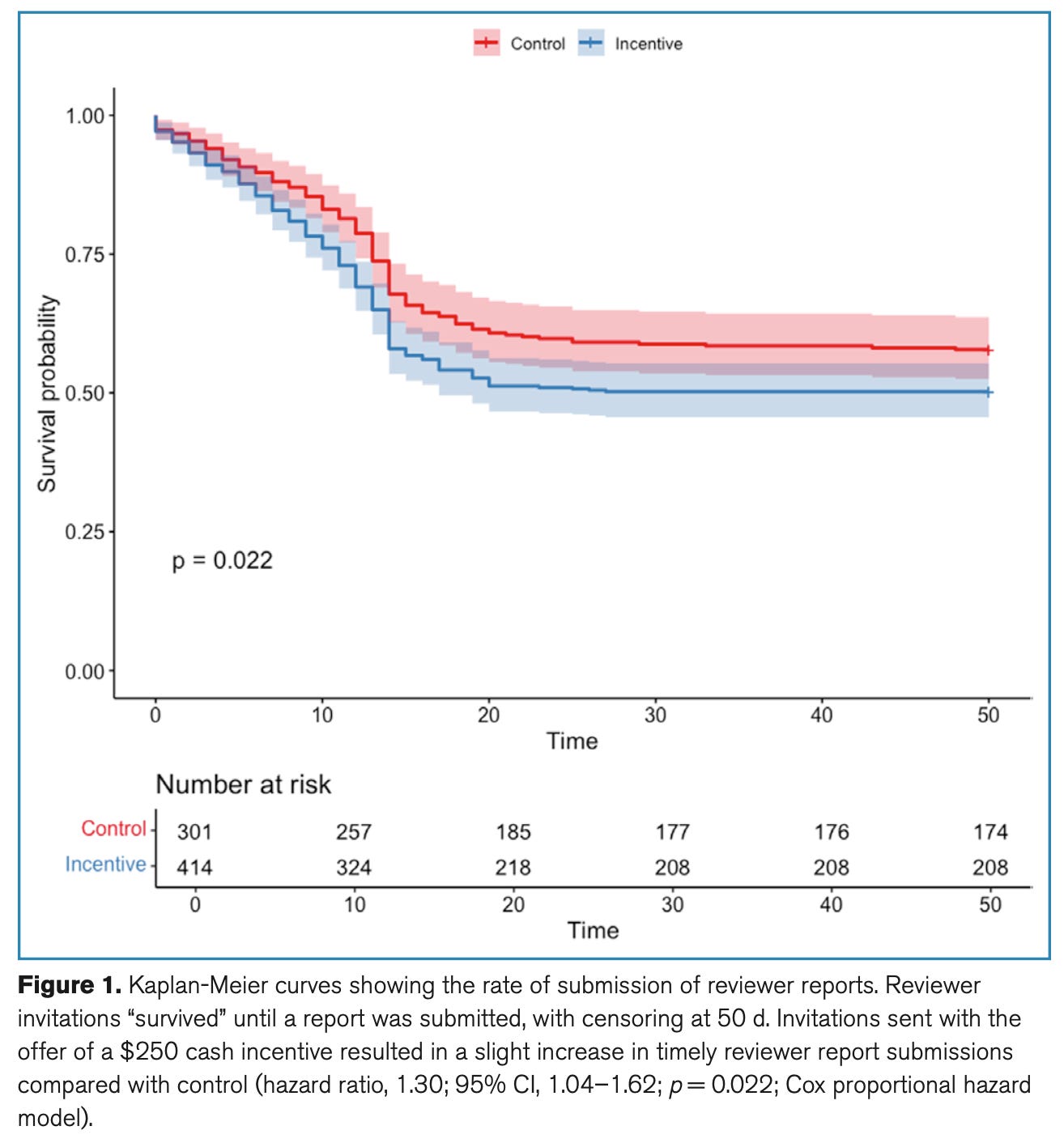You Don't Have to Review for Free?
The bribes aren't emphasized nearly enough here.
Running a medical journal is a tremendously profitable endeavour. Content is submitted – free! Reviewers conduct their reviews – free! And, then the editors turn around and sell that content back to authors and journals, or charge a substantial publication fee to make it Open Access.
It is estimated U.S.-based clinicians and resources contribute over $1.5 billion of unpaid time to peer review activities. The value of the time and effort put into the research manuscript obviously far exceeds that.
So, my rallying call – don’t review for free!
Well, this journal actually tested the premise – with a $250 payment for timely submission of an invited review. Here’s what they saw happen:
It’s not the most intuitive presentation of data, but the gist – lower survival is better, so, yes, paying reviewers “worked”.
What’s a bit confusing is why it only barely worked. Certainly, some reviewers won’t have time regardless of incentive, so there’s a ceiling to its effectiveness. One possibility is the reviewer acceptance rate for Critical Care Medicine is already high enough the potential for improvement is limited.
However, my suspicion is the money wasn’t hardly promoted adequately. The offer of $250 is buried in the third paragraph of what appears otherwise to be standard review invitation boilerplate, and would be easy to overlook. It is not specifically stated anywhere in the manuscript, but I would go so far as to assume the extra incentive was not mentioned in the e-mail subject line, either.
So, I would not generalize this effect size broadly; I would wager it could be much larger under different circumstances, and leveraging better communication.


My big concern with this would be incentivizing people to review articles they aren't qualified to review. While I don't know that there's anything I'd actually consider myself a subject matter expert in, I try to only review stuff that is "in my wheelhouse". But if there was $250 involved I'd probably be more likely to accept some of the "borderline" manuscripts.